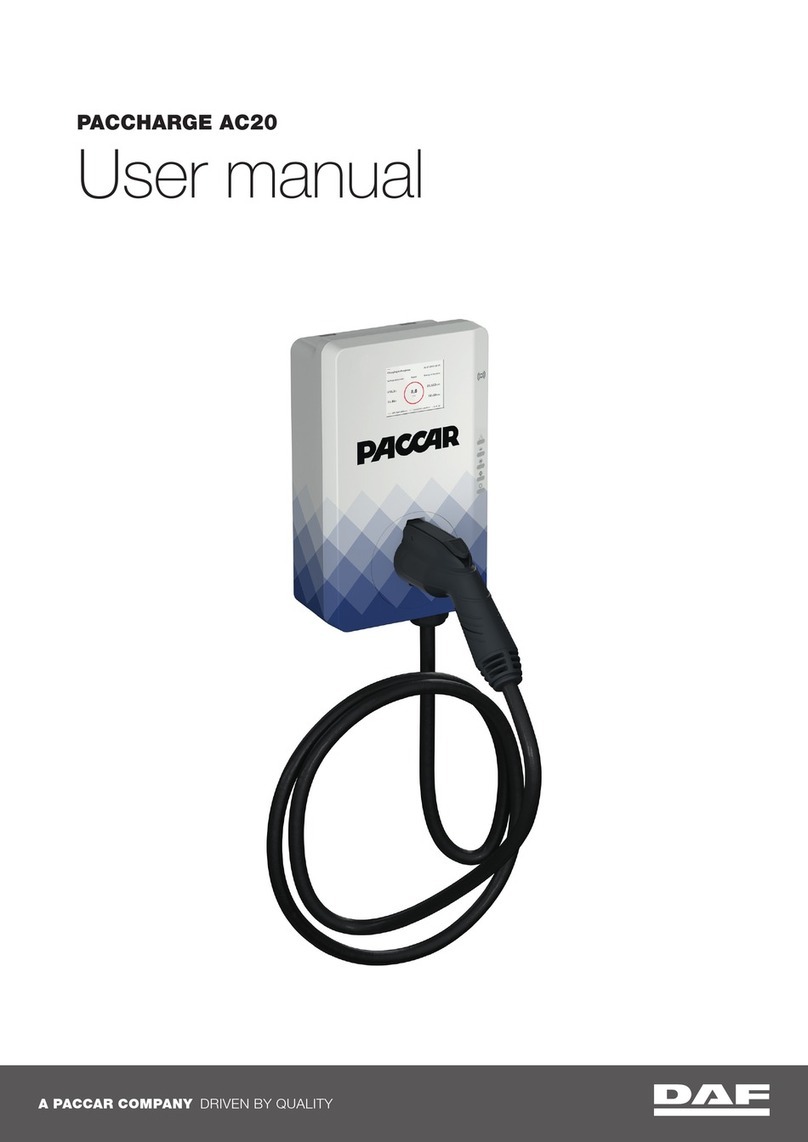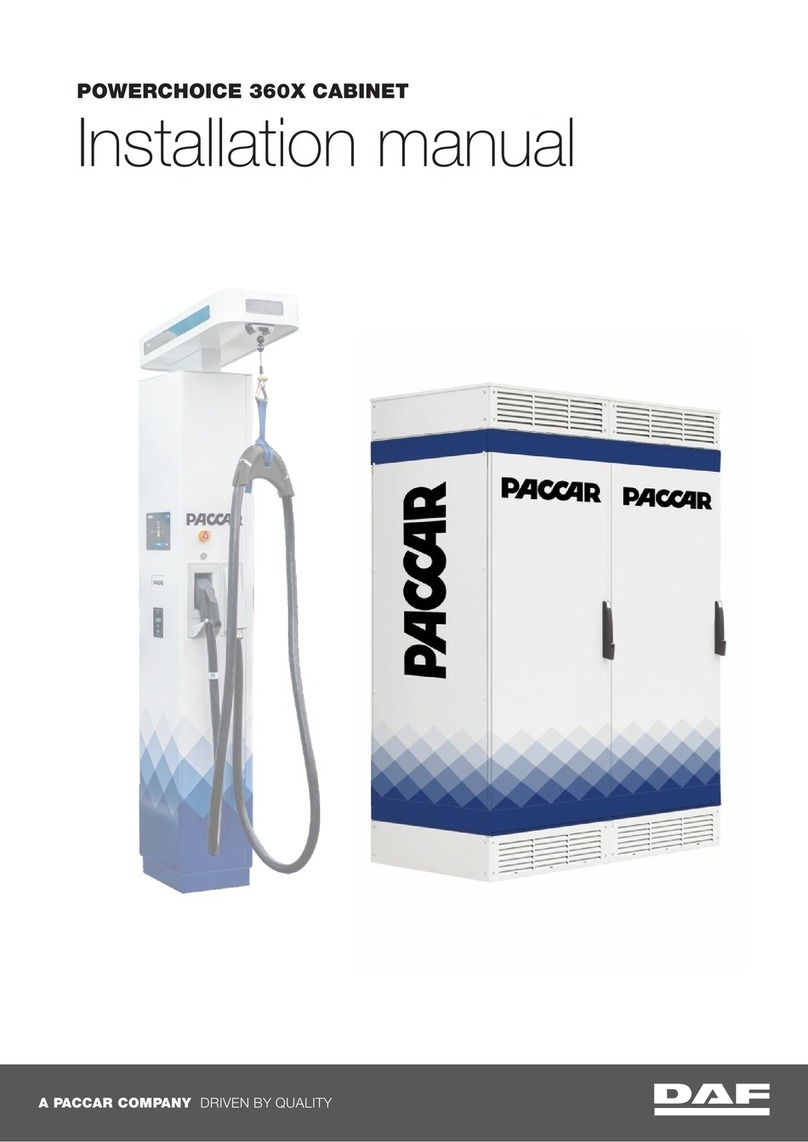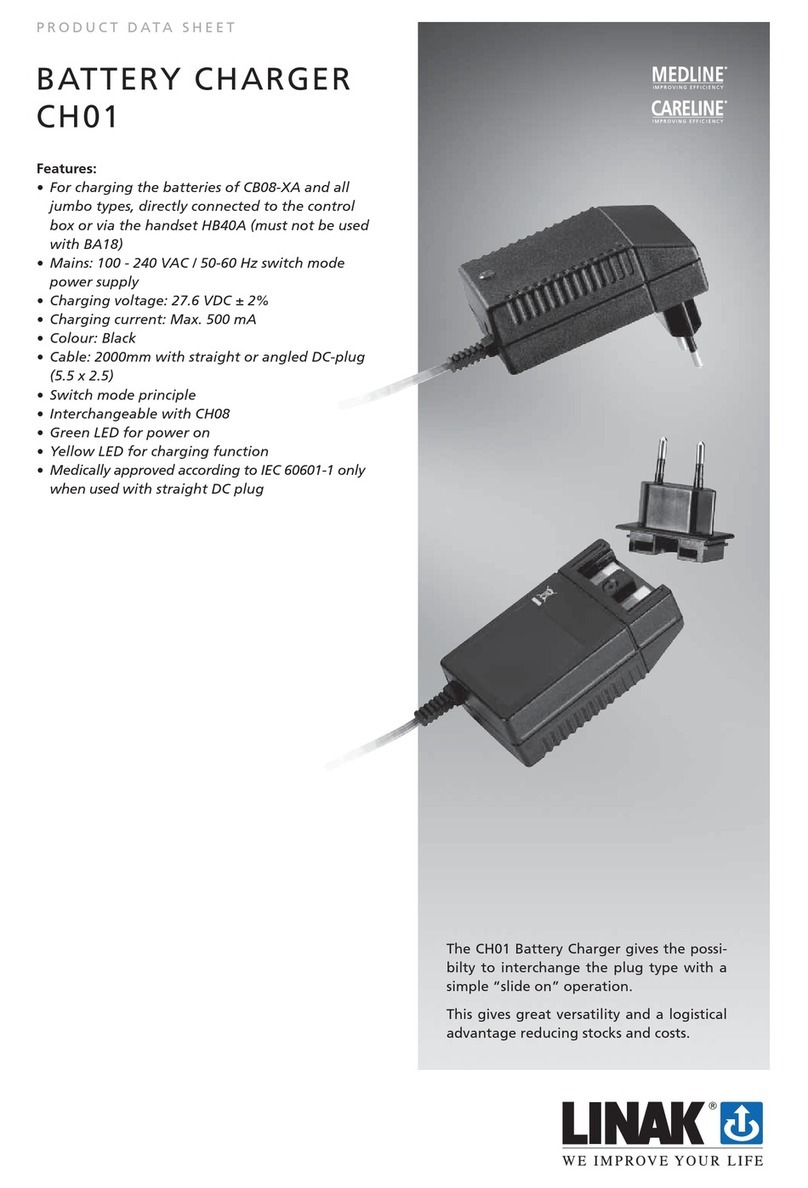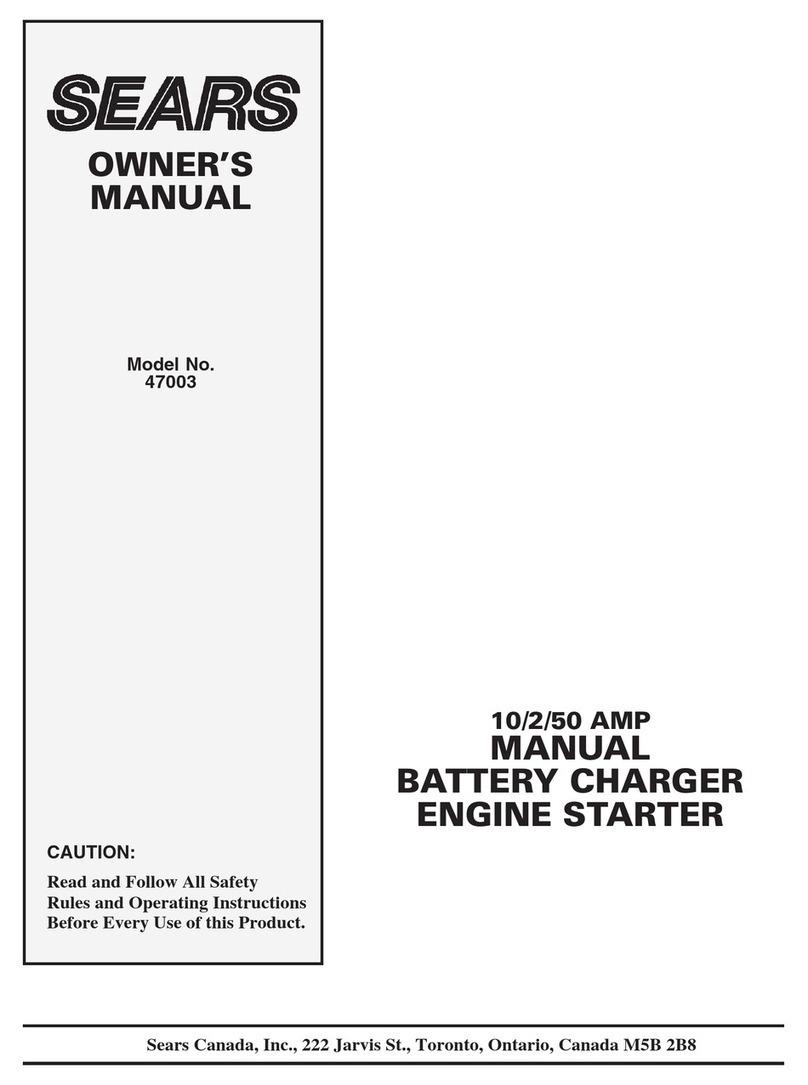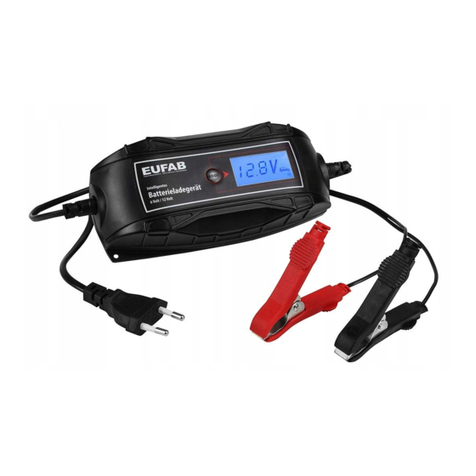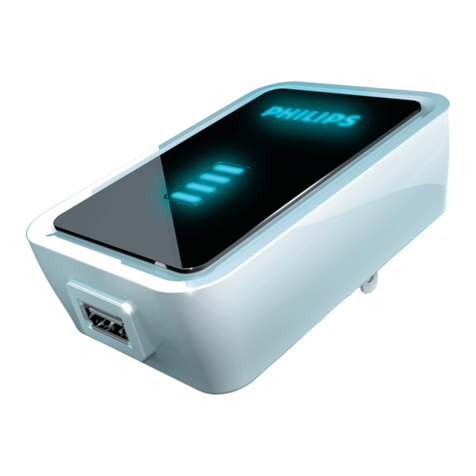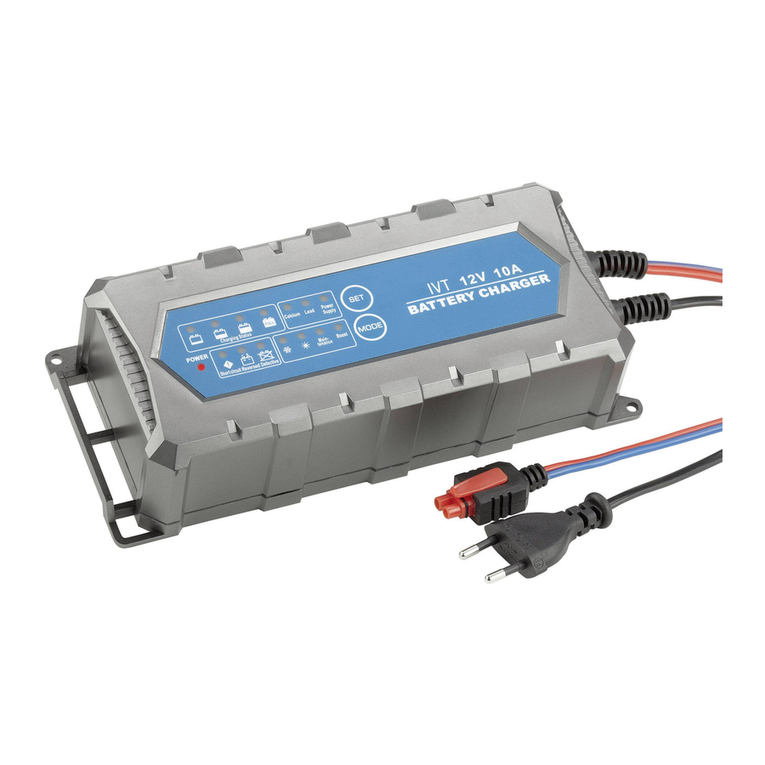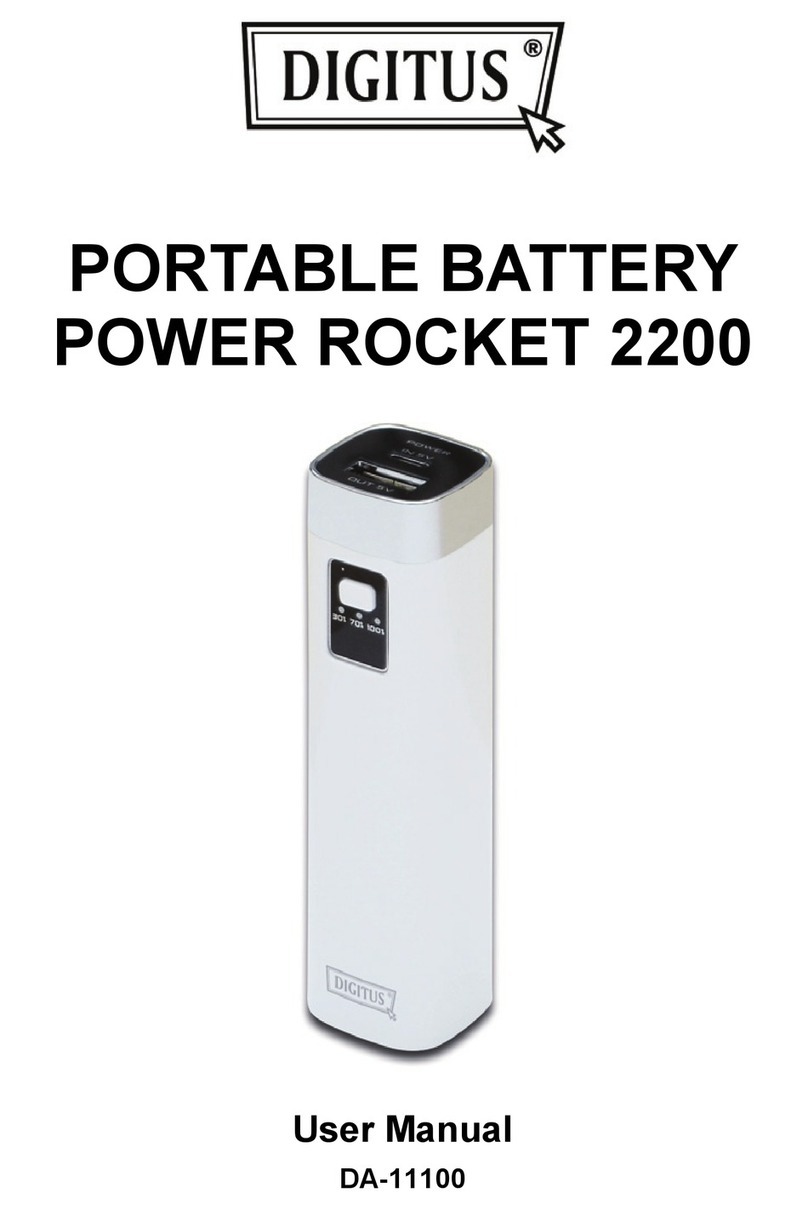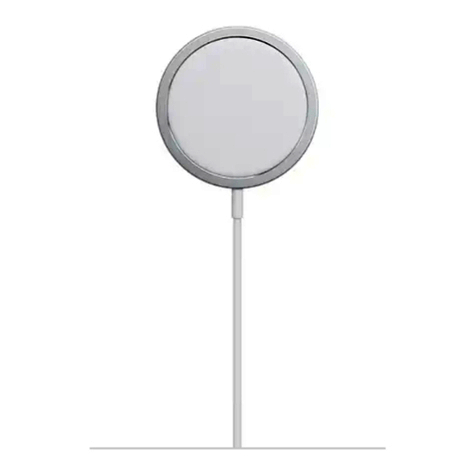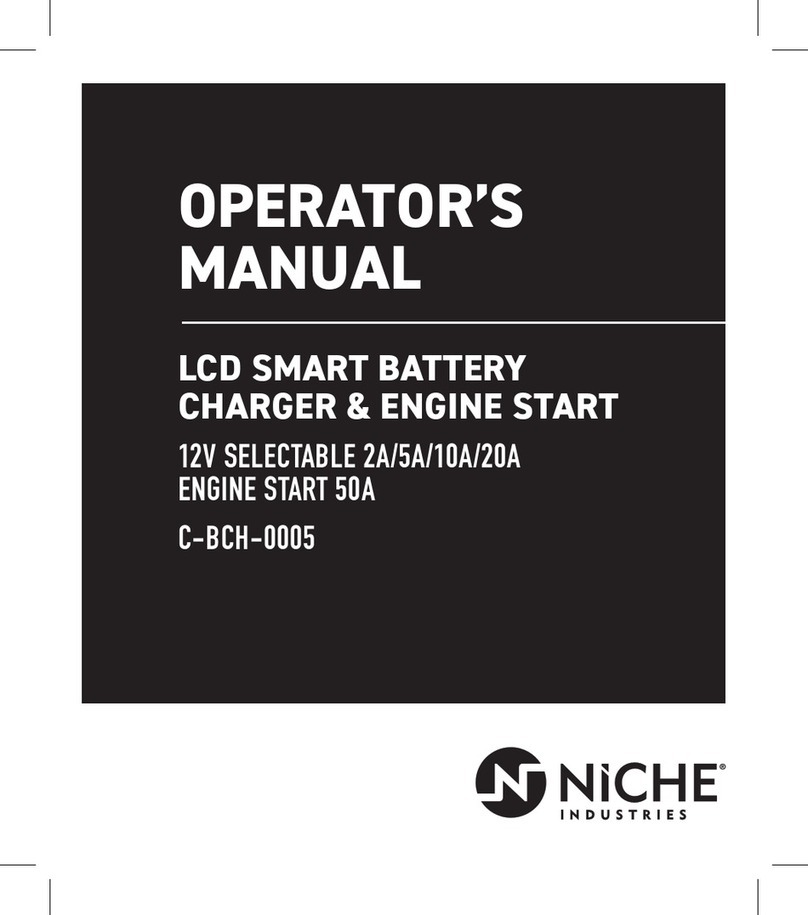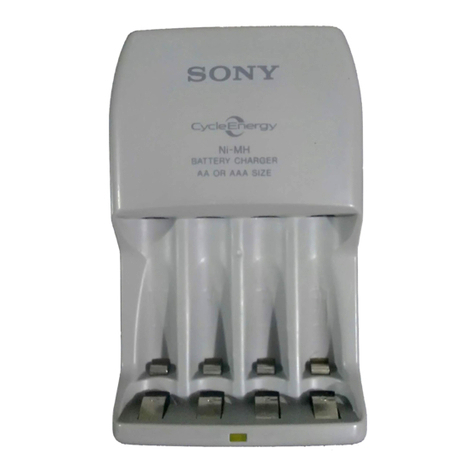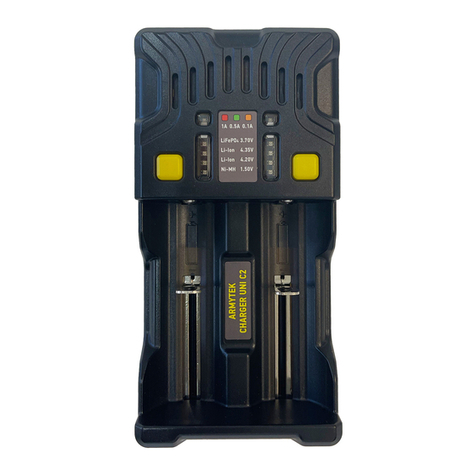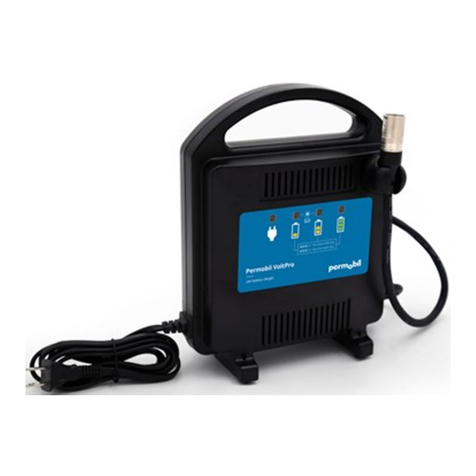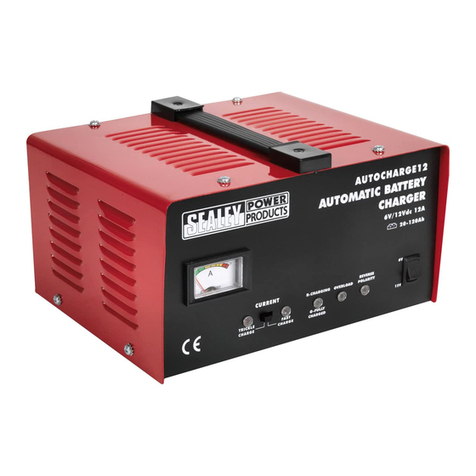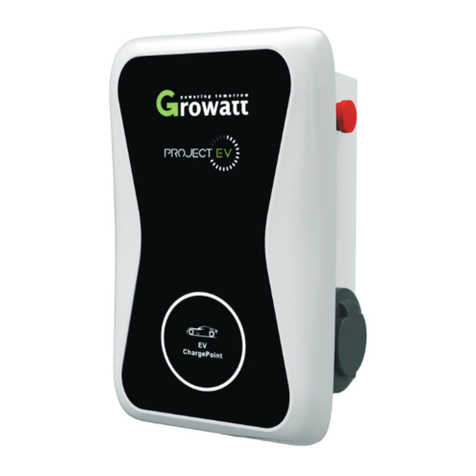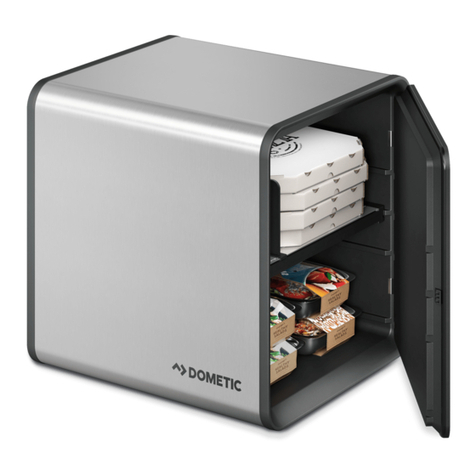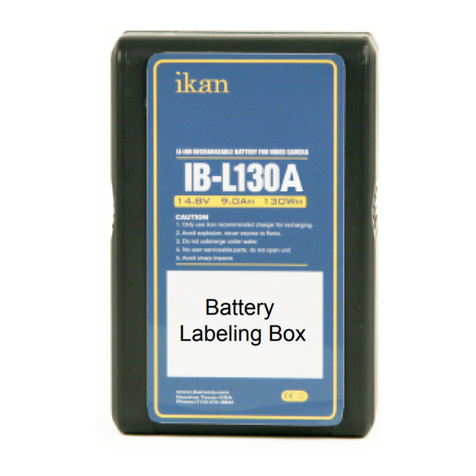Paccar DAF EVSE Series User manual

A PACCAR COMPANY DRIVEN BY QUALITY
CHARGEMAX 90-120-180
Installation manual

This document contains information about one or more
PACCAR/ABB products and may include a description
of or a reference to one or more standards that may
be generally relevant to the products.
The presence of any such description of a standard or
reference to a standard is not a representation that all of
the PACCAR products referenced in this document support
all of the features of the described or referenced standard.
In order to determine the specific features supported by a
particular PACCAR product, the reader should consult the
product specifications for that particular product.
PACCAR/ABB may have one or more patents or pending
patent and registered trademarks applications protecting
the intellectual property described in this document.
The information in this document is subject to change
without notice and should not be construed as a
commitment by PACCAR. PACCAR assumes no
responsibility for any errors that may appear in this
document.
In no event shall PACCAR be liable for direct, indirect,
special, incidental or consequential damages of any nature
or kind arising from the use of this document, nor shall
PACCAR be liable for incidental or consequential damages
arising from use of any software or hardware described
in this document.
This document and parts thereof must not be reproduced
or copied without written permission from PACCAR, and
the contents thereof must not be imparted to a third party
nor used for any unauthorized purpose.
PACCAR | ABB
2
Notice

Contents
1 About this document 6
1.1 Function of this document. 6
1.2 Target group. 6
1.3 Revision history. 6
1.4 Language. 6
1.5 Illustrations. 6
1.6 Units of measurement. 6
1.7 Typographical conventions. 6
1.8 How to use this document. 6
1.9 General symbols and signal words. 7
1.10 Special symbols for warnings and dangers. 8
1.11 Related documents. 8
1.12 Manufacturer and contact data. 8
1.13 Abbreviations. 9
1.14 Terminology. 9
1.15 Orientation agreements. 10
2 Description 11
2.1 Type plate. 11
2.2 Intended use. 11
2.3 Working principles. 12
2.3.1 ChargeMax 90, 120 and 180 CC. 12
2.3.2 ChargeMax 90, 120 and 180 C. 13
2.4 Overview. 14
2.4.1 Overview of the system. 14
2.4.2 Overview of the EVSE, outside. 15
2.4.3 Overview of the EVSE, inside. 16
2.5 Options. 17
2.5.1 EV charge cable, Combo 2. 17
2.5.2 Integrated payment terminal - CCV. 17
2.6 External residual-current device. 18
3 Safety 19
3.1 Liability.19
3.2 General safety instructions. 19
3.3 Required qualifications for the installation engineer. 19
3.4 Personal protective equipment. 20
3.5 Safety instructions during installation. 20
3.6 Safety instructions during transport. 21
3.7 Safety instructions for earthing. 21
3.8 Signs on the EVSE. 21
3.9 Discard parts or the EVSE. 22

4 Transport 23
4.1 Transport the EVSE to the site. 23
4.2 Transport the EVSE on the site. 23
4.2.1 Hoist the cabinet. 23
4.2.2 Move the cabinet with a forklift truck. 24
5 Installation 25
5.1 General installation procedure. 25
5.2 Site preparation. 25
5.2.1 Prepare the site. 25
5.2.2 Control the space and airflow around the cabinet. 26
5.3 Prepare the foundation. 26
5.3.1 Prepare the foundation - general procedure. 26
5.3.2 Prepare a standard prefab foundation. 26
5.3.3 Prepare a custom foundation. 27
5.4 Unpacking. 27
5.4.1 Unpacking procedure. 27
5.4.2 Do a check on the transport sensors. 27
5.4.3 Remove the cabinet from the pallet. 28
5.5 Mechanical installation. 28
5.5.1 Mechanical installation procedure. 28
5.5.2 Open the cable inlet and remove the cable gland. 28
5.5.3 Guide the cables through the opening in the cable guide plate. 29
5.5.4 Install the cabinet on the foundation. 29
5.6 Electrical installation. 30
5.6.1 Electrical installation procedure. 30
5.6.2 Connect the wires of the AC input cable. 30
5.6.3 Connect the PE wire. 31
5.6.4 Connect the enclosure to the earth. 32
5.6.5 Connect the Ethernet cable. 32
5.7 Prepare for commissioning. 33
6 Access to parts 34
6.1 Open the doors. 34
6.2 Close the doors. 34
6.3 Remove the border covers. 35
6.4 Install the border covers. 36
7 Troubleshooting 37
7.1 Troubleshooting procedure. 37

8 Technical data 38
8.1 EVSE type. 38
8.2 Parts included in the delivery. 38
8.3 General specifications. 39
8.4 Required tools for installation. 39
8.5 Torque specifications. 40
8.6 Ambient conditions. 40
8.7 Mass and center of gravity. 40
8.8 Noise level. 40
8.9 Transport specifications. 40
8.10 Dimensions. 41
8.10.1 General dimensions. 41
8.10.2 Cable slack. 41
8.10.3 Floor space requirements. 41
8.10.4 Prefab foundation. 42
8.10.5 Custom foundation. 43
8.11 Logic interface specifications. 43
8.12 AC input specifications. 44
8.12.1 General AC input specifications. 44
8.12.2 AC input cable. 44
8.12.3 ChargeMax 90. 45
8.12.4 ChargeMax 120. 45
8.12.5 ChargeMax 180. 45
8.13 DC output specifications. 45
8.13.1 General specifications. 45
8.13.2 ChargeMax 90. 45
8.13.3 ChargeMax 120. 47
8.13.4 ChargeMax 180. 48
8.14 Power consumption. 50
8.14.1 General specifications. 50
8.14.2 ChargeMax 90. 50
8.14.3 ChargeMax 120. 50
8.14.4 ChargeMax 180. 50
8.15 Current peaks during the start of a charge cycle. 50

6
1. About this document
1.1 Function of this document
The document is only applicable for this EVSE (ChargeMax series), including the variants and options
listed in section 8.1.
The document gives the information that is necessary to install the EVSE.
1.2 Target group
The document is intended for qualified installation engineers.
For a description of the required qualifications, refer to section 3.3.
1.3 Revision history
Version Date Description
001 Initial version
1.4 Language
The original instructions of this document are in English (EN-US). All other language versions are
translations of the original instructions.
1.5 Illustrations
It is not always possible to show the configuration of your EVSE. The illustrations in this document show
a typical setup. They are for instruction and description only.
1.6 Units of measurement
SI units of measurement (metric system) are used. If necessary, the document shows other units between
parentheses () or in separate columns in tables.
1.7 Typographical conventions
The lists and steps in procedures have numbers (123) or letters (abc) if the sequence is important.
1.8 How to use this document
1. Make sure that you know the structure and contents of this document.
2. Read the safety chapter and make sure that you know all the instructions.
3. Do the steps in the procedures fully and in the correct sequence.
4. Keep the document in a safe location that you can easily access. This document is a part of the
EVSE.

7
1.9 General symbols and signal words
Signal word Description Symbol
Danger If you do not obey the instruction, this can cause injury or death. Refer to
section 1.10.
Warning If you do not obey the instruction, this can cause injury. Refer to
section 1.10.
Caution If you do not obey the instruction, this can cause damage to the
EVSE or to property.
Note A note gives more data, to make it easier to do the steps, for
example.
-Information about the condition of the EVSE before you start the
procedure.
-Requirements for personnel for a procedure.
-General safety instructions for a procedure.
-Information about spare parts that are necessary for a procedure.
-Information about support equipment that is necessary for a
procedure.
-Information about supplies (consumables) that are necessary for
aprocedure.
-Make sure that the power supply to the EVSE is disconnected.
-Electrotechnical expertise is required, according to the local rules.
Note: It is possible that not all symbols or signal words are present in this document.

8
1.10 Special symbols for warnings and dangers
Symbol Risk type
General risk
Hazardous voltage that gives risk of electrocution
Risk of pinching or crushing of body parts
Rotating parts that can cause a risk of entrapment
Note: It is possible that not all symbols are present in this document.
1.11 Related documents
Document name Target group
Product data sheet All target groups
Installation manual Qualified installation engineer
User manual Owner
Service manual Qualified service engineer
Declaration of conformity (CE) All target groups
1.12 Manufacturer and contact data
Manufacturer
ABB EV Infrastructure
Heertjeslaan 6
2629 JG Delft
The Netherlands
Contact data
The local representative of the manufacturer can give you support on the EVSE. You can find the contact
data here: https://new.abb.com/

9
1.13 Abbreviations
Abbreviation Definition
AC Alternating current
CAN Controller area network
CPU Central processing unit
DC Direct current
EMC Electromagnetic compatibility
EV Electric vehicle
EVSE Electric vehicle supply equipment
MiD Measuring Instruments Directive
NFC Near field communication
NoBo Notified body
OCPP Open charge point protocol
PE Protective earth
PPE Personal protective equipment
RFID Radio-frequency identification
Note: It is possible that not all abbreviations are present in this document.
1.14 Terminology
Term Definition
Network operating center of the
manufacturer
Facility of the manufacturer to do a remote check on the correct
operation of the EVSE
Cabinet Enclosure of the EVSE, including the components on the inside
CHAdeMO Japanese DC fast charging method for electric vehicles
Contractor Third party that the owner or site operator hires to do engineering,
civil and electrical installation work
Grid provider Company that is responsible for the transport and dis-
tribution of electricity
Local rules All rules that apply to the EVSE during the entire lifecy- cle of the
EVSE. The local rules also include the national laws and
regulations.
Open charge point protocol Open standard for communication with charge sta- tions
Owner Legal owner of the EVSE
Site operator Entity that is responsible for the day-to-day control of the EVSE.
The site operator does not have to be the owner.
User Owner of an EV, who uses the EVSE to charge the EV
Note: It is possible that not all terms are present in this document.

10
1.15 Orientation agreements
A Front side: face forward to the EVSE during normal use X X-direction (positive is to the right)
B Left side Y Y-direction (positive is rearward)
C Right side Z Z-direction (positive is upward)
D Rear side
D
C
B
X
Z
Y
A

11
2. Description
2.1 Type plate
A Manufacturer H EVSE rating
B Serial number I Address of the manufacturer
C Part number of the EVSE J CE mark
D Production date K Barcode with the serial number of the EVSE
E Internal product code (for the manufacturer) L Barcode with the part number of the EVSE
F Full EVSE type M Additional EVSE rating data
G EVSE mass
Note: Find the type plate on your EVSE to see the applicable data. Refer to section 2.4.2.
2.2 Intended use
The EVSE is intended for the DC charging of EVs. The EVSE is intended for indoor or outdoor use.
The properties of the electrical grid, the ambient conditions and the EV must comply with the technical
data of the EVSE. Refer to chapter 8.
Only use the EVSE with accessories that the manufacturer provides and that obey the local rules.
Danger:
General risk
• If you use the EVSE in any other way than described in the related documents, you can
cause death, injury and damage.
• Use the EVSE only as intended.
IP54
SN: XXXX-XXX-XXXX-XXX
Part number XXXXXXXXXX
Prod. date XX XXXX XXXXXXXXXXXX
XX XXXXX XX
FOR USE WITH ELECTRICAL VEHICLES
Input xxxV x+PE-
DC Input xxx-xxxV Max xxxA
DC Output 1 CCS2 xxx-xxxV Max xxxA
DC Output 2 CHAdeMO xxx-xxxV Max xxxA
Max x.xkW/xxHz
DC AUX xxV xA
George Hintzenweg 81,
3068 AX Rotterdam,
The Nederlands
MADE IN ITALY
www.abb.com
Weight XXX Kg
XXXXXXXXXX
XXXX-XXX-XXXX-XXX
A
B
C
D
E
G
H
I
J
F
K
L
M

12
2.3 Working principles
2.3.1 ChargeMax 90, 120 and 180 CC and CJ
A AC input cable
B Manual switch
C EMC filter
D AC contactor
E Residual-current device and breaker
F Power module matrix
G Power module
H DC filter
I DC contactor
J DC fuse
K Overcorrect protection device
L Charge cable
M Interlink contactor
• Black and bold lines: power connection
• Black and thin lines: auxiliary power connection
• Green lines: CAN bus
• Purple lines: control signal or monitoring signal
Note: For ChargeMax 90, the second array of three power modules is empty.
A
S
R
Q
T
U V N O
XX
G
G
G
G
G
G
F
K
K
L
L
ON
B D EC H JI
H I
J
W
P
M
1
1
2
N Insulation management interface
O Charge protocol interface
P Surge-protection device
Q Residual-current device
R Heater
S Auxiliary power supply
T Cabinet controller board
U Power bridge
V Touchscreen
W Cooling fan
X LED for the illumination of the exterior
of the EVSE
1 CAN bus signal 1
2 CAN bus signal 2

13
2.3.2 ChargeMax 90, 120 and 180 C
A AC input cable
B Manual switch
C EMC filter
D AC contactor
E Residual-current device and breaker
F Power module matrix
G Power module
H DC filter
I DC contactor
J DC fuse
K Overcurrent protection device
L Charge cable
M Insulation management interface
• Black and bold lines: power connection
• Black and thin lines: auxiliary power connection
• Green lines: CAN bus
• Purple lines: control signal or monitoring signal
Note: For ChargeMax 90, the second array of three power modules is empty.
A
R
Q
P
S
T U
W
G
G
G
G
G
G
F
KL
NM
B D EC H JI
V
O
2
1
1
N Charge protocol interface
O Surge-protection device
P Residual-current device
Q Heater
R Auxiliary power supply
S Cabinet controller board
T Power bridge
U Touchscreen
V Cooling fan
W LED for the illumination of the exterior
of the EVSE
1 CAN bus signal 1
2 CAN bus signal 2

14
2.4 Overview
2.4.1 Overview of the system
A EVSE
B AC input cable
C Power distribution board
Part Function
EV The EV of which the batteries need to be charged
EVSE Refer to section 2.4.2.
Parking space Location for the EV during the charge session
AC input cable To supply the electrical energy to the EVSE
Power distribution board To connect the EVSE to the AC grid input
EV charge cable To conduct the charge from the EVSE to the EV
D Parking space
E EV
F EV charge cable

15
2.4.2 Overview of the EVSE, outside
A Left door
B Type plate
C Air inlet
D Cover on the air outlet
E Border cover
F EV charge cable outlet and holder (1x or 2x)
G Plate over the RFID reader and the integrated
payment terminal
Part Function
Front, left and right door To give authorized personnel access to the inside of the EVSE
Type plate To show the identification data of the EVSE. Refer to section 2.1.
Air inlet and outlet To let cooling air in and out. The airflow makes sure that the parts
on the inside of the EVSE do not become too hot.
Cover on the air outlet To prevent a blockage of the air outlet
Border cover To cover the lower part of the EVSE
EV charge cable outlet and holder To connect and hold the EV charge cable. Refer to sec- tion 2.5.
RFID reader To read the information from an RFID card
Payment terminal To pay for the charge session
Emergency stop button To stop the EVSE when there is an emergency
Touchscreen To control and monitor the charge session
Enclosure To reduce the accessibility of unqualified persons to the inside of
the EVSE
Antenna To send and receive wireless 2G, 3G and 4G signals
N
J
K
I
H
G
F
A
B
C
D
M
L
C
E
H Emergency stop button
I Touchscreen
J Front door
K Enclosure
L Antenna
M Right door
N Air outlet

16
2.4.3 Overview of the EVSE, inside
A Main breaker 2
B Main breaker 1
C PE busbar
D Surge protection device switch
Part Function
Main breaker 2 To connect or disconnect the power modules group 2
Main breaker 1 To connect or disconnect the power modules group 1
PE busbar To connect the PE cable
Surge protection device switch Breaker to protect the surge protection device, always in the on
position
Ethernet connection Connection for the Ethernet cable
Cable guide plate Plate with openings for the AC input cable and the Ethernet cable
Manual switch To connect or disconnect the AC power input
Auxiliary power supply breaker To connect or disconnect the AC power input to or from the
auxiliary power for the control circuit
H
G
F
A
B
C
D
E
E Ethernet connection
F Cable guide plate
G Manual switch
H Auxiliary power supply breaker
16

2.5 Options
2.5.1 EV charge cable, Combo 2
A EV charge cable
2.5.2 Integrated payment terminal - CCV
17

2.6 External residual-current device
The manufacturer does not supply an external residual-current device. If an external residual-current
device is required because of local rules, this section helps you to select the correct device.
Situation: the local rules require an immunity for short current peaks over PE during the EV charging
process.
At the start of the EV charge cycle, a relay switches and engages the AC input power to the power
modules. Incidental current peaks can occur. For the specifications of the current peaks, refer to
section8.15.
A combination of these factors is the source of these current peaks:
• Asynchronous engagement of the phases in the relay
• The electrical capacity of the AC input power part of the EVSE
The amplitude of the current peaks can change. These factors are the source of the differences:
• The location of the EVSE
• The power grid
• The earth impedance
18

3. Safety
3.1 Liability
The manufacturer is not liable to the purchaser of the EVSE or to third parties for damages, losses, costs
or expenses incurred by the purchaser or third parties if any target group mentioned in the related
documents does not obey the rules below:
• Obey the instructions in the related documents. Refer to section 1.11.
• Do not misuse or abuse the EVSE.
• Only make changes to the EVSE, if the manufacturer approves in writing of the changes.
This EVSE is designed to be connected to and to communicate information and data via a network
interface. It is the sole responsibility of the owner to provide and continuously ensure a secure connection
between the EVSE and the network of the owner or any other network.
The owner shall establish and maintain any appropriate measures (such as - but not limited to - the
installation of firewalls, application of authentication measures, encryption of data and installation of
anti-virus programs) to protect the EVSE, the network, its system and the interface against any kind of
security breaches, unauthorized access, interference, intrusion, leakage and/or theft of data or
information.
The manufacturer is not liable for damages and/or losses related to such security breaches, any
unauthorized access, interference, intrusion, leakage and/or theft of data or information.
3.2 General safety instructions
• This document, the related documents and the warnings included do not replace your responsibility
to use your common sense when you do work on the EVSE.
• Only do the procedures that the related documents show and that you are qualified for.
• Obey the local rules and the instructions in this manual. If the local rules contradict the instructions in
this manual, the local rules will apply.
If and to the extent permitted by law, in case of inconsistency or contradiction, between any
requirements or procedure contained in this document and any such local rules, obey the stricter
between the requirements and procedures specified in this document and the local rules.
3.3 Required qualifications for the installation engineer
• The qualified installation engineer fully knows the EVSE and its safe installation.
• The installation engineer is qualified to work on high-voltage and high-current electrical installations.
• The qualified installation engineer obeys all local rules and the instructions in the installation manual.
• It is the responsibility of the owner of the EVSE to make sure that all qualified installation engineers
obey the local rules, the installation instructions, and the specifications of the EVSE.
19

3.4 Personal protective equipment
Symbol Description
Protective clothing
Safety gloves
Safety shoes
Safety glasses
3.5 Safety instructions during installation
Preliminary requirements
1. •
• Do not use adaptors or conversion adapters.
• Do not use cord extension sets.
• Make sure that there is no voltage on the AC input cables during the complete installation procedure.
• Keep unqualified personnel at a safe distance during installation.
• Only use electrical wires of sufficient gauge and insulation to handle the rated current and voltage
demand.
• Make sure that the load capacity of the grid is in accordance with the EVSE.
• Earth the EVSE correctly. Refer to section 3.7.
• Make sure that the wiring inside the EVSE is protected from damage and cannot get trapped when
you open or close the cabinet.
• Make sure that water cannot enter the cabinet.
• Protect the EVSE with safety devices that the local rules specify.
• If it is necessary to remove safety devices, immediately install the safety devices after the work.
• Put on the correct personal protective equipment. Refer to section 3.4.
20
This manual suits for next models
4
Table of contents
Other Paccar Batteries Charger manuals
